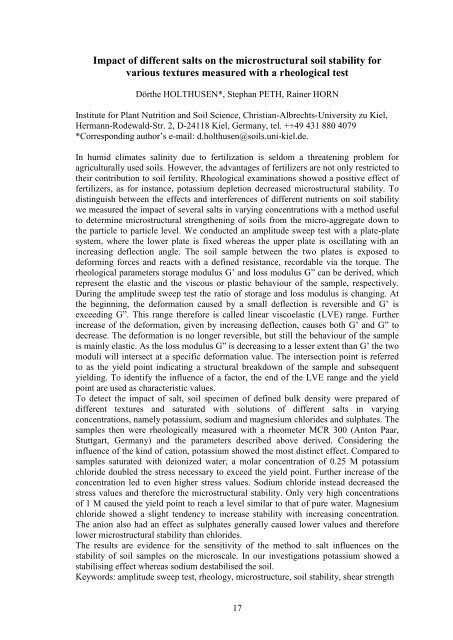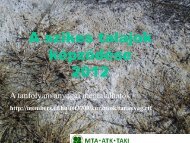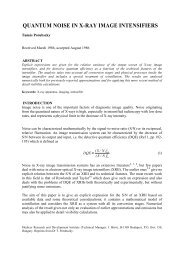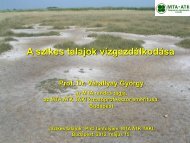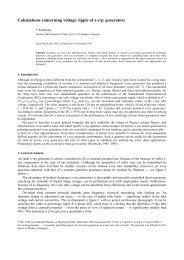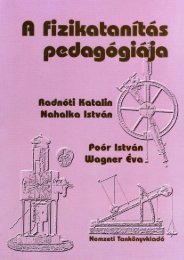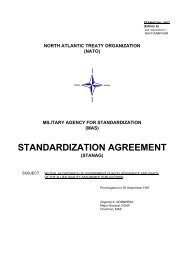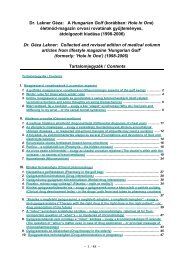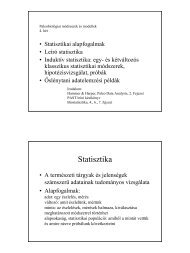Abstract form
Abstract form
Abstract form
Create successful ePaper yourself
Turn your PDF publications into a flip-book with our unique Google optimized e-Paper software.
Impact of different salts on the microstructural soil stability for<br />
various textures measured with a rheological test<br />
Dörthe HOLTHUSEN*, Stephan PETH, Rainer HORN<br />
Institute for Plant Nutrition and Soil Science, Christian-Albrechts-University zu Kiel,<br />
Hermann-Rodewald-Str. 2, D-24118 Kiel, Germany, tel. ++49 431 880 4079<br />
*Corresponding author’s e-mail: d.holthusen@soils.uni-kiel.de.<br />
In humid climates salinity due to fertilization is seldom a threatening problem for<br />
agriculturally used soils. However, the advantages of fertilizers are not only restricted to<br />
their contribution to soil fertility. Rheological examinations showed a positive effect of<br />
fertilizers, as for instance, potassium depletion decreased microstructural stability. To<br />
distinguish between the effects and interferences of different nutrients on soil stability<br />
we measured the impact of several salts in varying concentrations with a method useful<br />
to determine microstructural strengthening of soils from the micro-aggregate down to<br />
the particle to particle level. We conducted an amplitude sweep test with a plate-plate<br />
system, where the lower plate is fixed whereas the upper plate is oscillating with an<br />
increasing deflection angle. The soil sample between the two plates is exposed to<br />
de<strong>form</strong>ing forces and reacts with a defined resistance, recordable via the torque. The<br />
rheological parameters storage modulus G’ and loss modulus G” can be derived, which<br />
represent the elastic and the viscous or plastic behaviour of the sample, respectively.<br />
During the amplitude sweep test the ratio of storage and loss modulus is changing. At<br />
the beginning, the de<strong>form</strong>ation caused by a small deflection is reversible and G’ is<br />
exceeding G”. This range therefore is called linear viscoelastic (LVE) range. Further<br />
increase of the de<strong>form</strong>ation, given by increasing deflection, causes both G’ and G” to<br />
decrease. The de<strong>form</strong>ation is no longer reversible, but still the behaviour of the sample<br />
is mainly elastic. As the loss modulus G” is decreasing to a lesser extent than G’ the two<br />
moduli will intersect at a specific de<strong>form</strong>ation value. The intersection point is referred<br />
to as the yield point indicating a structural breakdown of the sample and subsequent<br />
yielding. To identify the influence of a factor, the end of the LVE range and the yield<br />
point are used as characteristic values.<br />
To detect the impact of salt, soil specimen of defined bulk density were prepared of<br />
different textures and saturated with solutions of different salts in varying<br />
concentrations, namely potassium, sodium and magnesium chlorides and sulphates. The<br />
samples then were rheologically measured with a rheometer MCR 300 (Anton Paar,<br />
Stuttgart, Germany) and the parameters described above derived. Considering the<br />
influence of the kind of cation, potassium showed the most distinct effect. Compared to<br />
samples saturated with deionized water, a molar concentration of 0.25 M potassium<br />
chloride doubled the stress necessary to exceed the yield point. Further increase of the<br />
concentration led to even higher stress values. Sodium chloride instead decreased the<br />
stress values and therefore the microstructural stability. Only very high concentrations<br />
of 1 M caused the yield point to reach a level similar to that of pure water. Magnesium<br />
chloride showed a slight tendency to increase stability with increasing concentration.<br />
The anion also had an effect as sulphates generally caused lower values and therefore<br />
lower microstructural stability than chlorides.<br />
The results are evidence for the sensitivity of the method to salt influences on the<br />
stability of soil samples on the microscale. In our investigations potassium showed a<br />
stabilising effect whereas sodium destabilised the soil.<br />
Keywords: amplitude sweep test, rheology, microstructure, soil stability, shear strength<br />
17


